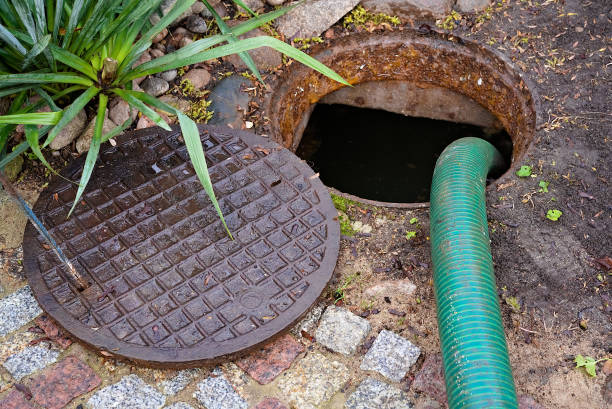If you’re the type who likes to do things yourself, fixing a leaky pipe now and then is OK. However, it is a bigger problem than a clogged toilet or leaky pipe. It is not a job that should be attempted by the homeowner. A septic tank backup can be quite dangerous, and you should contact a septic service firm as soon as possible to have the situation corrected.
The possible occurrence of septic backup is one that homeowners will have to deal with. You must have your sewage leak repaired as soon as possible because it is a health concern to you and your neighboring properties. This is one job for which you will require the services of a professional. When it comes to dealing with septic systems, you need to be skilled and knowledgeable about how the system works, where the drain field is located, and how the piping from your home to your septic tank is connected.
Is It Possible For My Septic System To Back Up Into My Home?
It is very possible. Slow draining sinks and bathtubs could be your first and only warning indicators. If this appears to be happening regularly, it could indicate something more serious to come.
If you notice murky, black, or dark-colored water backing up into your toilets, bathtub, or sinks, it could be sewage, and you should call a septic provider for an immediate inspection. If it is a backup problem, they will have the necessary instruments and experience to fix it properly without potentially endangering your or your neighbors’ homes.
What Is The Root Cause Of This Situation?
For the most part, tree roots are the root of the problem of septic system backups and sewage line problems. Tree roots that have grown underground have found their way into the cracks in the pipes and have continued to grow, resulting in an obstruction.
Clogs due to foreign objects: Objects deemed non-flushable like feminine hygiene products, baby wipes, diapers, or other similar items could have been flushed through the system and trapped.
Garbage disposal: Another common source of blockages is garbage disposal, which is designed to discharge the contents into an open sewage line. However, if the food is not broken down into small enough pieces, it can become lodged in the pipes and produce a clog.
Unexpectedly large amounts of water being forced into the system at once by dishwashers, washing machines, and frequent showers can also result in an overflow. This is referred to as an overload, and it may be avoided by spreading out your water consumption among appliances and showers. For instance, run a shower in the morning, your dishwasher in the evenings, and do laundry a couple of times a week to space out your tasks. As a result, excessive water will not be forced into the system, preventing it from overflowing and pushing back into the house.
The Following Are 5 Warning Signs You Shouldn’t Ignore
If you notice one or more of these five signs, your septic system may be failing. If you only have the first of these indicators, it may not be a significant worry, but you most likely have a serious issue if you have more than one of these signs.
- A clogged drain
- You have a foul odor in your yard.
- Backed up water in the shower, sinks, or tubs
- Standing water in the vicinity of the septic tank cover
- A patch of land that is green or that has a lot of water in it
Is It Possible To Avoid This?
Keep toys and other objects from being flushed down the toilets to avoid septic system backups and other problems.
A sink strainer is a handy tool to stop food clogs by preventing food leftovers from going down the drain. You can also avoid overflowing toilets by spreading out your use of water.
Also, make sure that your system is pumped out at a suitable time. Septic systems should be pumped out every 3 to 5 years to prevent developing problems. If you follow these recommendations, you should have no trouble keeping your septic system in good working order.

